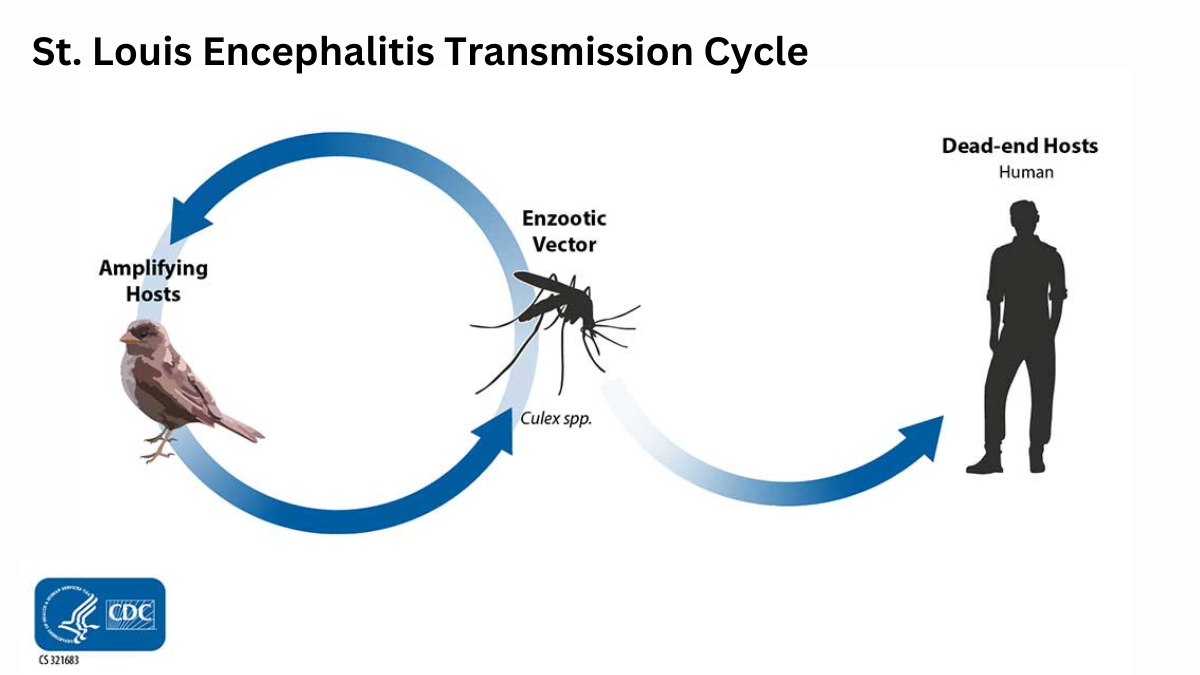Key points
- St. Louis encephalitis virus is a mosquito-borne flavivirus, similar to West Nile virus.
- It is maintained in the environment between Culex species mosquitoes and avian hosts.
- Humans are dead-end hosts but can rarely transmit the virus through blood transfusions.

Virus
St. Louis encephalitis virus is a member of the family Flaviviridae, genus Flavivirus. SLE virus has a single-stranded, positive-sense RNA genome. The virus particles are spherical and have a diameter of 40 nm.

Other medically important flaviviruses found in the United States include West Nile virus and Powassan virus.
Transmission
St. Louis encephalitis virus is spread to people through the bite of an infected mosquito. Mosquitoes become infected when they feed on birds that have the virus in their blood.
Birds that live in urban-suburban areas, such as the house sparrow, pigeon, blue jay, and robin, are common St. Louis encephalitis virus hosts. The principal vectors are Culex species mosquitoes, including Cx. pipiens and Cx. quinquefasciatus in Eastern states, Cx. nigripalpus in Florida, and Cx. tarsalis and members of the Cx. pipiens complex in Western states.

People do not develop high enough levels of the virus in their blood to infect mosquitoes. As a result, people are considered "dead-end" hosts for St. Louis encephalitis virus. However, the levels of St. Louis encephalitis virus in people's blood is enough to spread the infection through blood transfusions, though this very rarely occurs.
Prevent getting sick with St. Louis encephalitis by preventing mosquito bites.
